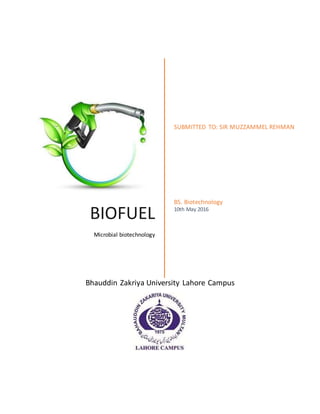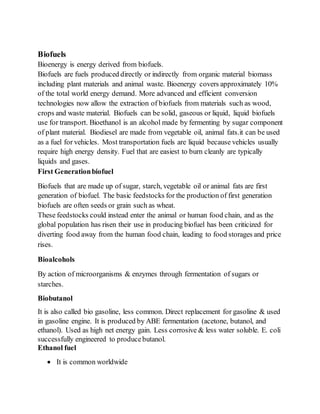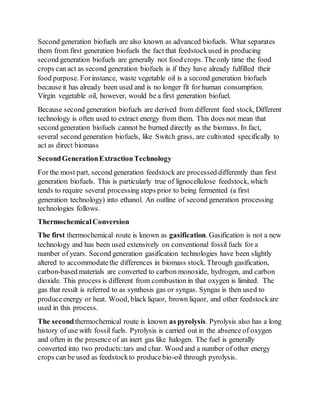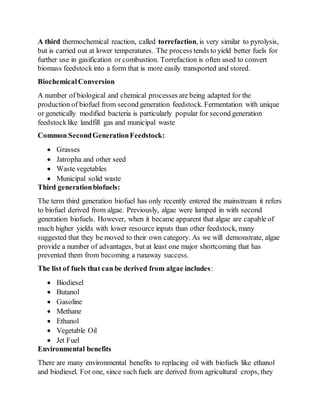This document discusses various types of biofuels including first, second, and third generation biofuels. First generation biofuels are made from sugar, starch, vegetable oils or animal fats. Second generation biofuels use non-food feedstocks and different extraction technologies like gasification, pyrolysis, and fermentation. Third generation biofuels are derived from algae. The document also discusses pros and cons of biofuel production such as their renewability but also potential high costs and impacts on food supply.







